Who is a Trekking Guide?
A trekking guide is a trained expert who escorts and supports trekkers during the trek in himalayas and remote regions. Nepal Trekking Guides are trained by the Nepal Academy of Tourism and Hotel Management (NATHM) or other specialized institutions, and they must possess a valid license from the Government of Nepal in order to be legally hired.
Guides are usually locals who are well acquainted with the region's geography, climate, culture, and language. Their acquaintance is not just about reading a map, they know the terrain by the back of their hand, know the short cuts, can identify safe camping sites or tea houses, and know how to act in emergencies like injuries, altitude sickness, or changes in weather.
/thorongla.jpg)
Top Reasons to Hire a Trekking Guide in Nepal
Hiring a trekking guide in Nepal is not just about following rules,it’s about making your trek safer, smoother, and more enriching. Here are the top reasons why hiring a guide is highly recommended, especially for high-altitude treks:
1. Safety First
Trekking in the Himalayas comes with real challenges ,from rough trails to altitude sickness. A licensed guide is trained in first aid and emergency response, and they can recognize early symptoms of altitude-related illnesses. In case of injury, illness, or sudden weather changes, a guide knows what to do and how to get help quickly.
2. Mandatory in Many Regions
The Government of Nepal has made it compulsory to hire licensed guides in several trekking regions, including Everest, Manaslu, Mustang, and more. This rule helps reduce accidents and ensures that trekkers are not left alone in remote or high-risk areas. Going without a guide in such places can result in entry restrictions or penalties.
3. Stress-Free Trekking Experience
A guide takes care of logistics ,from arranging your accommodation and meals to ensuring permits are in order. They manage daily plans, keep track of time, and adjust the pace according to your comfort. This allows you to fully enjoy the trek without worrying about planning every detail.
4. Local Knowledge
Trekking guides are often locals who know the trail, weather patterns, and cultural practices of the region. They can explain the meanings behind monasteries, prayer flags, and festivals, making your journey more insightful. They also help you communicate with villagers and teahouse owners along the way.
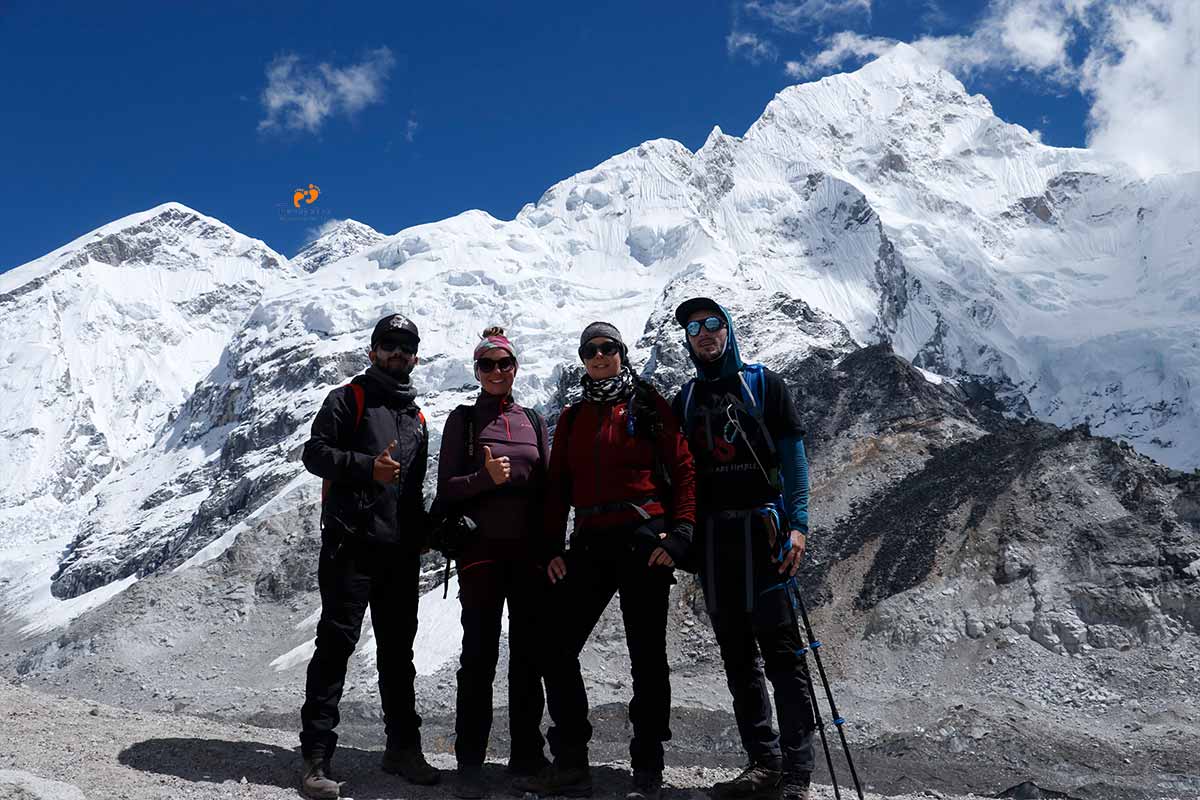
5. Support in Emergencies
In the mountains, help is not always nearby. If there’s a need for rescue operations or helicopter evacuation, your guide will be the one contacting authorities and arranging support. Their experience can often prevent minor issues from becoming serious problems.
6. Language and Communication
English is not widely spoken in many rural parts of Nepal. A guide helps you communicate effectively, translate conversations, and understand the local way of life. This builds a deeper connection with the communities you pass through.
7. Cultural Respect and Etiquette
Nepal is rich in culture and tradition. A guide helps you respect local customs ,whether it’s when entering a monastery, eating at a local home, or participating in village events. This not only shows respect but also enhances your overall experience.
8. Boosts Local Economy
Hiring a guide directly supports the local economy and creates employment opportunities for people living in mountain regions. It’s a meaningful way to contribute to responsible and sustainable tourism in Nepal.
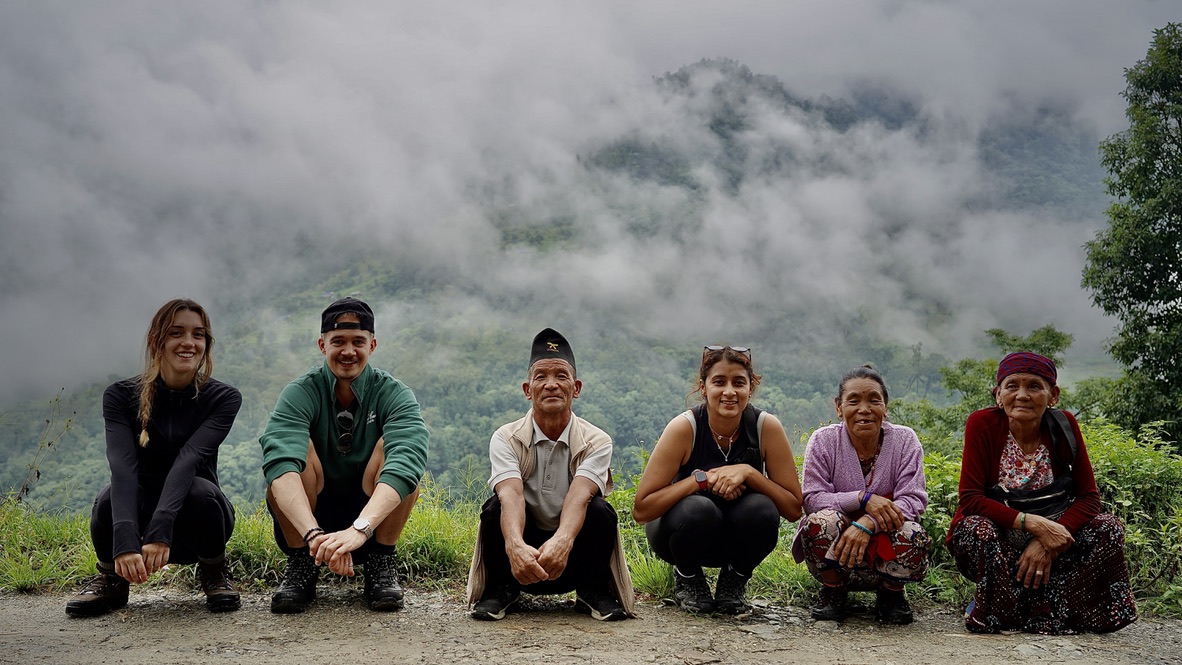
Roles and Responsibilities of a Trekking Guide
A trekking guide is the backbone of any successful high-altitude trek in Nepal. Their responsibilities go far beyond leading the way ,they are the planners, protectors, translators, and often, the heart of the entire trekking experience. Whether you’re hiking through the Annapurna region, exploring the Everest Base Camp trail, or venturing into remote areas like Manaslu or Dolpo, the presence of a professional guide significantly enhances your journey in terms of safety, cultural immersion, and enjoyment.
Here’s a detailed look at the diverse roles and key responsibilities a trekking guide undertakes:
1. Route Planning and Navigation
A guide takes full responsibility for planning the day’s route, keeping in mind your physical condition, weather forecasts, and trail conditions. While maps and GPS exist, the Himalayas are unpredictable ,trails may be washed away by landslides, snow-covered, or changed over time. A guide uses their local knowledge to find the best and safest route, and always has an alternate plan if something doesn’t go as expected.
/trekking.jpg)
2. Ensuring Safety and Health
Trekking at high altitudes carries the risk of Acute Mountain Sickness (AMS), hypothermia, injuries, or extreme fatigue. A qualified guide is trained in first aid and high-altitude response, and can recognize early symptoms of AMS. They make the decision whether to descend, rest, or call for emergency support. In remote areas where medical help is hours or even days away, this knowledge can be life-saving. Your guide monitors your health, hydration, pace, and provides advice to help you adjust properly to the altitude.
3. Logistical Management
From the moment the trek begins, your guide handles the entire logistical flow of the journey. This includes:
- Securing trekking permits and TIMS cards
- Arranging transportation before and after the trek
- Coordinating with porters and ensuring fair load distribution
- Managing accommodation and meals
- Keeping the trek on schedule while allowing flexibility for rest or acclimatization
This allows trekkers to focus solely on walking and soaking in the views, without worrying about where they’ll sleep or what they’ll eat.
/Food in between annapurna circuit trek.jpg)
4. Translation and Communication
In the remote hills of Nepal, English is rarely spoken fluently. A trekking guide acts as your bridge to the local communities, helping you communicate with lodge owners, porters, and villagers. They also help explain what’s culturally appropriate ,for example, how to greet locals, how to behave in monasteries, and what certain traditions mean. This makes the journey not only easier, but also more immersive and respectful.
5. Cultural and Environmental Education
Guides enrich your trekking experience by sharing stories, legends, local myths, and historical facts about the places you pass through. They explain the significance of Buddhist chortens, prayer flags, and village customs. Many also advocate for sustainable tourism, encouraging trekkers to avoid plastic, respect wildlife, and leave no trace on the trail. This role is especially vital in fragile ecosystems like the Himalayas.
6. Crisis Management and Emergency Response
In case of emergencies such as accidents, altitude sickness, trail blockages, or weather disruptions, the guide takes charge. They contact rescue teams, organize helicopter evacuations if needed, and ensure the affected trekker gets help fast. They are trained to remain calm and composed, which reassures the group and keeps panic under control.

7. Group Leadership and Motivation
Guides are often excellent at reading people. They know when someone is struggling or needs encouragement. They help manage group dynamics, resolve conflicts if any arise, and make sure everyone feels included. Their friendly nature, local stories, and trail-side humor often make them the most memorable part of the trip for many trekkers.
8. Porter Management
If porters are included in the trek, the guide ensures that they are treated fairly, not overloaded, and well taken care of. Ethical treatment of porters is an important responsibility, and professional guides act as leaders in ensuring trekking is respectful for everyone involved ,not just the tourists.
Why is a Trekking Guide Important?
Trekking in Nepal, especially in high-altitude regions, is not just a walk in the mountains,it’s a physically demanding and mentally challenging journey. In such conditions, a trekking guide becomes your strongest support system. Here’s why hiring a guide is not just helpful, but absolutely essential:
1. They Enhance Your Trekking Experience
A trekking guide doesn’t just show you the trail ,they bring the landscape to life. With stories of local legends, insights into Himalayan culture, and deep knowledge of the terrain, flora, and fauna, a guide transforms your trek from a simple hike into an enriching adventure. You'll learn more, connect deeper, and return with a far more meaningful experience.

2. They Keep You Safe in Unfamiliar Terrain
High-altitude trails are often unpredictable. From rapidly changing weather to steep trails, altitude sickness, and remote locations without network access ,there are countless challenges. A professional guide knows how to handle emergencies, read your health signs, and make decisions that prioritize your safety. In fact, due to the risks involved, the Government of Nepal has mandated hiring a licensed guide for many remote and high-altitude regions, including Everest and Manaslu. Going solo? It’s no longer advised ,and in some areas, not even permitted.
3. They Support the Local Economy and Promote Responsible Tourism
Hiring a local guide directly supports families in the trekking regions of Nepal. Guides are often from mountain communities and depend on tourism for their livelihood. Beyond economics, guides also promote ethical and eco-friendly practices, ensuring that trekking activities respect the environment and local culture. Your decision to hire a guide creates a ripple effect ,sustaining jobs, preserving trails, and keeping communities alive.

Qualities of a Good Trekking Guide
Not all guides are the same. The best ones don’t just lead the way ,they inspire trust, share knowledge, and become cherished companions throughout the trek. Here are the top qualities to look for in a trekking guide:
1. Friendly and Approachable
You’ll be spending days ,or even weeks ,with your guide, so personality matters. A good guide is warm, humble, and genuinely interested in your comfort. They keep the group atmosphere positive, even on tough days.
2. Good Communicator
The ability to explain things clearly and answer your questions makes a big difference. Most professional guides in Nepal speak English and sometimes other languages like German, Spanish, or Japanese. Communication is crucial not only for cultural exchange but also during emergencies.
3. Physically Fit and Mentally Strong
Trekking guides walk with you every step of the way, often at high altitudes with long hours on foot. Their stamina, strength, and ability to stay calm under pressure help keep the entire group motivated and secure.
/Focus on extensive preperations.JPG)
4. Knowledgeable about Routes, Weather, and Safety
A licensed guide knows more than just the trail ,they understand weather patterns, altitude risks, safe water sources, best lodges, and ideal acclimatization routines. Their training helps prevent risks before they become problems.
5. Respectful to Nature and Local Culture
The Himalayas are more than mountains ,they’re sacred landscapes with rich cultural traditions. A good guide respects the environment, encourages sustainable practices, and helps you understand how to be a responsible trekker.
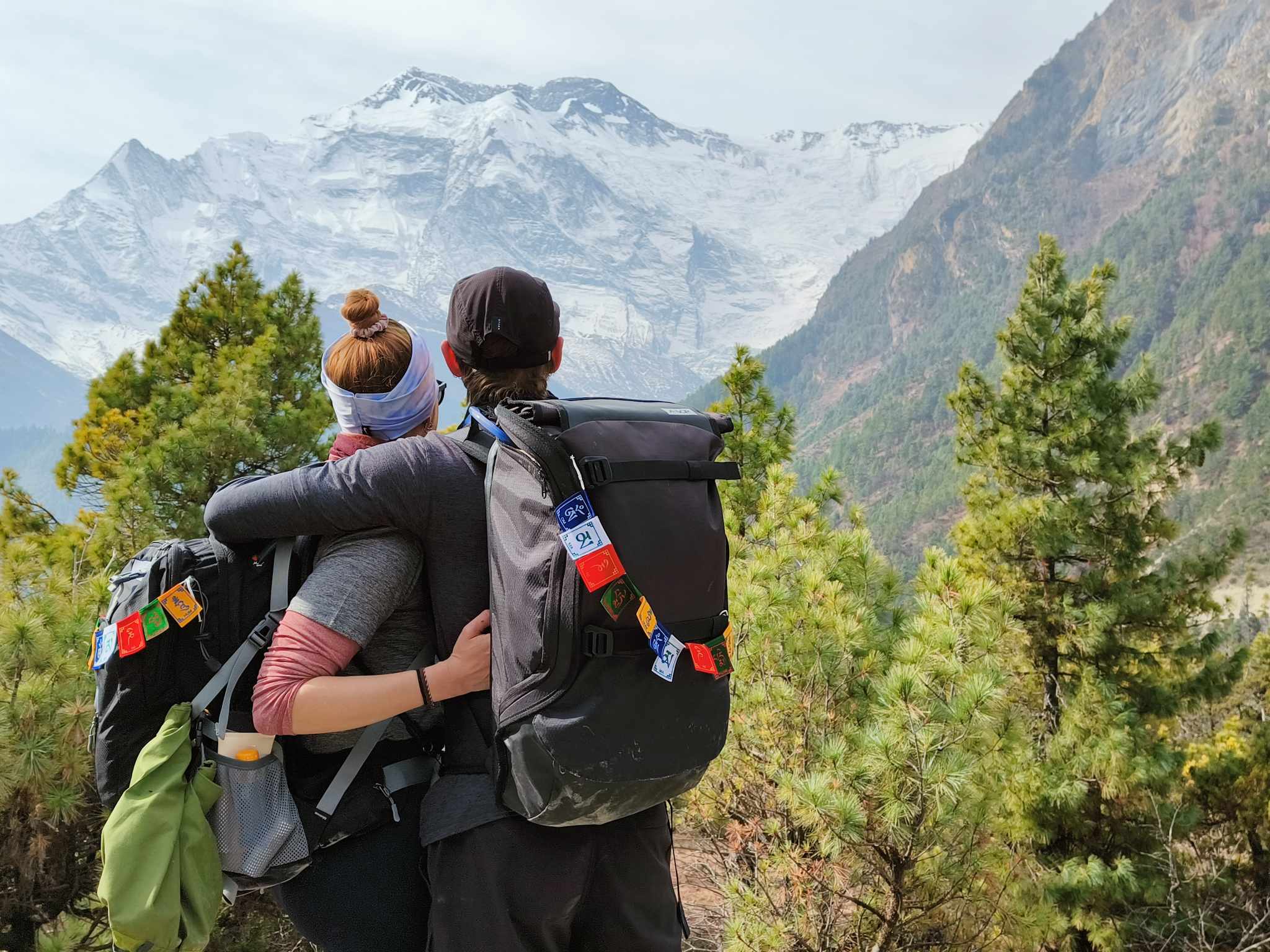
Where to Hire a Guide and How to Do It?
Every trekker hires a guide based on what feels right for them, but there are a few classic ways to find one. The most common and convenient method is through local travel agencies in Nepal.
Other ways include searching online or flying to Nepal and finding a guide in Kathmandu or Pokhara. If you want to save yourself the hassle and ensure everything goes smoothly, we recommend going through a registered travel agency—most of the work is taken care of for you.
1. Hiring a Guide Through a Travel Agency
Kathmandu has hundreds of trekking agencies. The first task is to find a trustworthy one. Look into their history—how long they’ve been operating, what kind of reviews they have, and whether they’re officially registered and offer guides with government certification.
If you book a complete trekking package, guides are usually included. But even without a full package, agencies can help you hire an experienced, certified guide based on your trek.
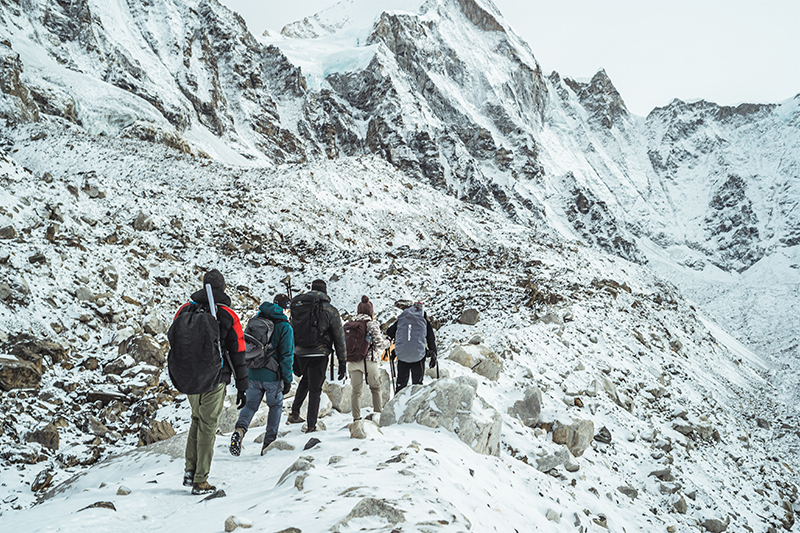
It is highly recommended to email or contact a few agencies ahead of your trip. Talk to them about your destination, settle on a price, and clearly state your preferences—like your deal breakers or must-haves in a guide. Be upfront about your budget so they can match you with the right person.
2. Finding a Guide in Kathmandu or Pokhara
This is okay if you’re a returning trekker with previous experience or connections. If you’ve trekked before and know a reliable guide or have Nepali friends who can refer someone, it can be a secure way to go.
However, if you don’t have any prior contacts, this approach can be risky and confusing. You’ll have to walk around, talk to lots of people, and deal with different opinions, which can get overwhelming.
Worse, you could get scammed if you're not careful. Always check for government certification, official documents, and a record of their past treks before finalizing anything.

3. Finding a Guide Online
The internet is a powerful tool—you can find hundreds of trekking guides online. Many experienced guides have personal websites or profiles on platforms like:
- Withlocals
- ToursByLocals
- GuideAdvisor
When checking their profiles, make sure to:
- Read reviews (especially negative ones)
- Check if they are trained in first aid
- Look for pictures of certificates and licenses
Don’t hesitate to chat with them beforehand. Talk about your trek, test their knowledge, ask about logistics, and negotiate the price if needed. It’s important to feel comfortable before making your choice.

4. Cost of Hiring a Trekking Guide in Nepal
Guide costs vary depending on the region, length of your trek, and their experience. Generally, guides charge around $25 to $30 per day. Highly experienced or in-demand guides may charge a little more. It’s worth paying for quality, especially since your guide is responsible for arranging permits, helping you navigate trails, and even getting you out of tough situations.
Most guides also have local connections in the mountains, which can make your trip feel even more welcoming.
5. Things to Clarify Before Hiring
- Is food and accommodation for the guide included in your payment?
- Who handles the trekking permits?
- Will the guide arrange transportation/logistics?
Some agencies include your guide’s lodging and meals, while others don’t. If you're hiring independently, you’ll likely have to cover your guide’s accommodation and food too, so be sure to confirm this beforehand.
6. What About Tipping?
Tipping isn’t mandatory in Nepal, but it’s highly appreciated. If your guide goes above and beyond, a tip of atleast 10% of the total guiding fee is considered generous and respectful.


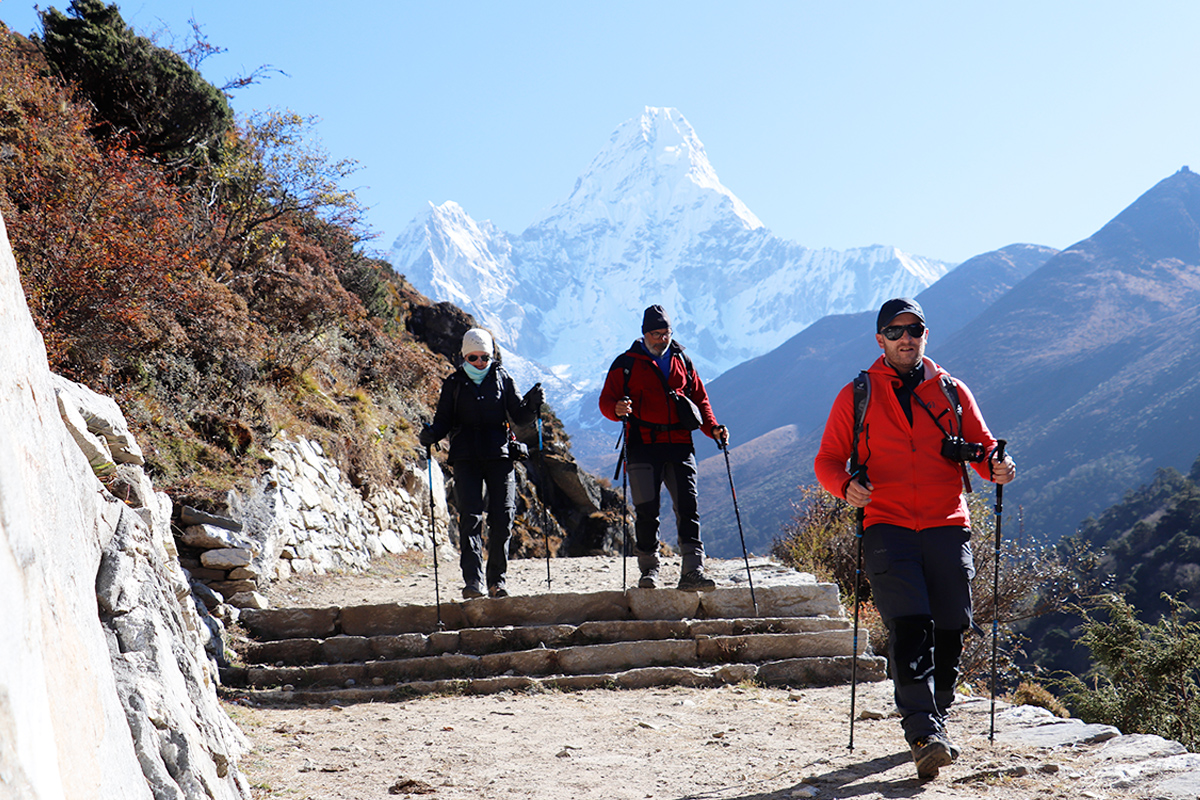
/thorongla.jpg)


/trekking.jpg)
/Food in between annapurna circuit trek.jpg)



/Focus on extensive preperations.JPG)




